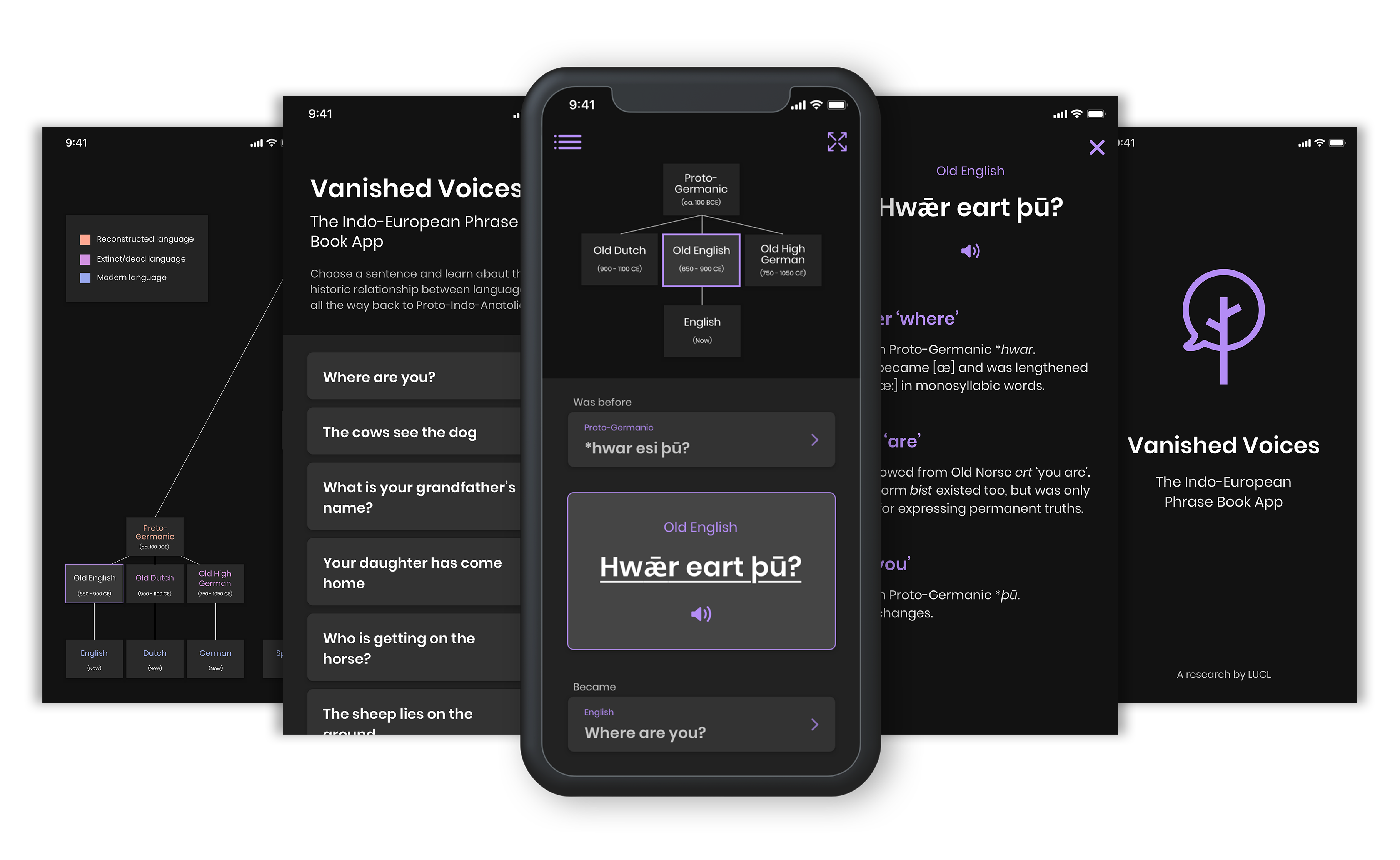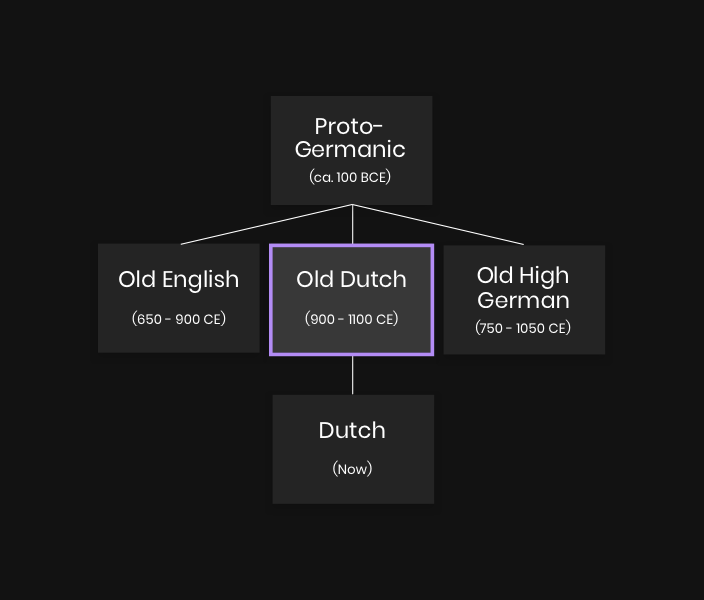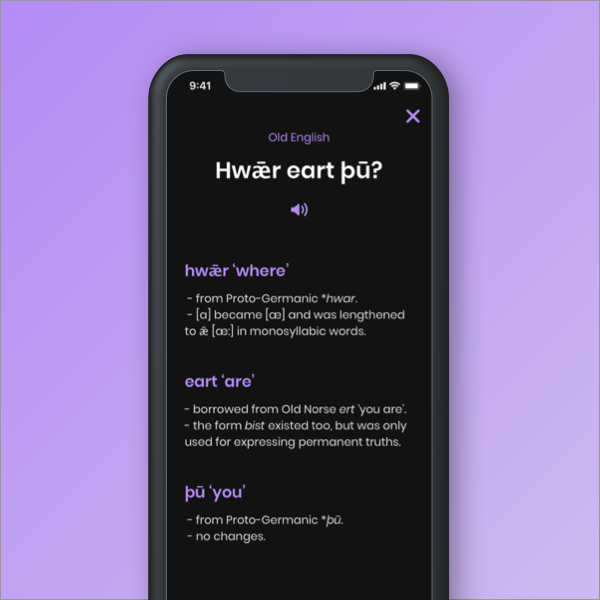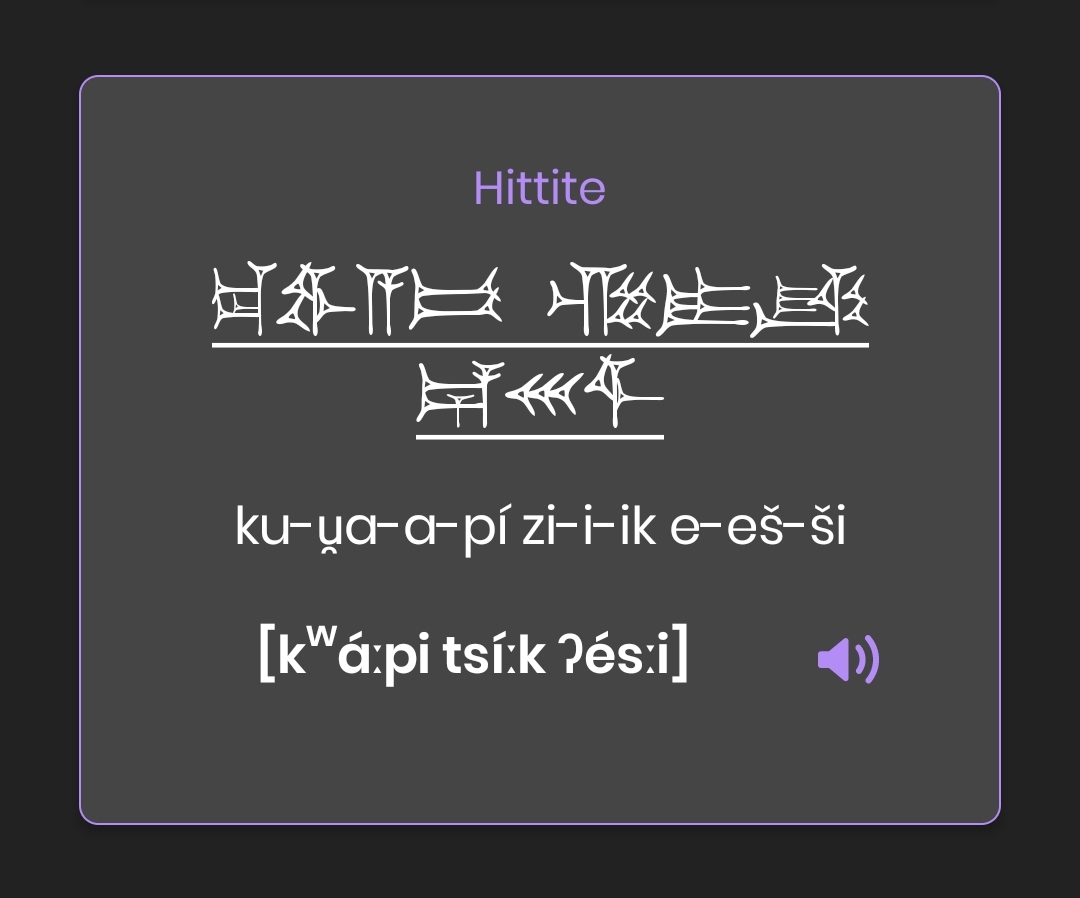Leiden University
Back in the history of language
How did people speak thousands of years ago? And what did these languages sound like? The Vanished Voices app for Android and iOS answers these questions. This app from Leiden University takes you back in the history of language to 4500 BC. The app is part of the research project ''Splitting the Mother Tongue''.

Background
The Vanished Voices app is a project of Leiden University. Associate professor Alwin Kloekhorst and Lecturer Rogier te Paske (Leiden University Centre for Linguistics) decided to present the results of the research 'Splitting the Mother Tongue' via an app. After months of intensive collaboration, the Vanished Voices app is the result and a great success with reactions from all over the world. Or to quote Alwin Kloekhorst:'The app Vanished Voices is as close to time travel as you can get.' :-)
Approach
For the designers and developers of Zooma, languages such as Proto-Indo-Anatolian or Proto-Italo-Celtic were initially completely "abracadabra" ;-). In itself not a disadvantage, because the task was to develop an app that presents the results of research in a way that even non-linguists can understand. Thanks to Rogier's passionate explanations, we understood the purpose of the app and together we quickly arrived at a rough first draft for the app.

Family tree
In the (clickable) languages family tree you can see which language was spoken when.

Sentencing
Each sentence is dissected by language in writing and spoken in an audio file.

Exotic fonts
There is quite a bit of cuneiform writing in the app. Do you understand what it says? ;-)
Wireframes and designs
Zooma started making wireframes. These are construction drawings of the app. The basis of the Vanished Voices app is a language family tree. Users can navigate through this family tree of languages in the app and experience how certain phrases have evolved over time ... From language to language. Using 12 phrases, the different languages explain their origins, and via recorded audio files, the ancient languages can be listened to!
After the wireframes were completely clear, Zooma also created the designs of the app. Vanished Voices did not yet have a logo and corporate identity, and Zooma presented Alwin and Rogier with a number of options. A dark background and white text. A dark background is quieter for your eyes while reading pieces of text: ideal for the Vanished Voices app, of course.
Development & challenges
Zooma first started with the native iOS app. The advantage of starting with one platform is that you have a proof of concept faster and testing can be done quickly. Once all the obstacles in iOS (Swift) were overcome, we were able to "recreate" the Android version (in Kotlin) relatively quickly. While Zooma developed the app, Alwin and Rogier added the content (texts, phonetic transcriptions, audio files) to the CMS.
One challenge was the "exotic" fonts. One of the languages in the Vanished Voices app is Hittite, a cuneiform script. The special characters of this language were not properly displayed in the app. After parsing the font, the special characters turned out to be Unicode characters, like emoji. These characters consist of 4 bytes each, which is more than normal. Once we figured that out, it was quickly fixed with features that do support multibyte characters.
Next
